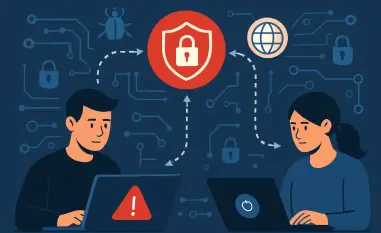Introduction to IoT Home Security and the YoLink Smart Hub
Imagine a scenario where a budget-friendly device, designed to secure a home, becomes the very gateway for intruders to gain access, highlighting the alarming reality facing users of affordable Internet of Things (IoT) solutions in the smart home security sector. The IoT industry has seen exponential growth, with millions of households integrating connected devices to monitor and control locks, cameras, and sensors. These systems promise convenience and safety, yet the rush to adopt low-cost options often overlooks critical security gaps that can jeopardize both digital and physical well-being.
Among these solutions, the YoLink Smart Hub (v0382), developed by YoSmart, stands out as a popular choice for cost-conscious consumers seeking to manage multiple home systems through a single gateway. Positioned as an accessible entry point into smart home technology, this hub competes with offerings from major players like Amazon, Google, and Samsung in a market increasingly driven by affordability. Its appeal lies in seamless integration with various devices, catering to a growing demographic that prioritizes value over premium features.
The technological foundation of such hubs, including YoLink’s, often relies on components like the ESP32 chip for processing, alongside cloud services and protocols such as MQTT and LoRa/LoRaWAN for communication. While these elements enable efficient operation across sprawling ecosystems, they also introduce complex vulnerabilities if not secured properly. As adoption rates soar, understanding the balance between innovation and risk in this competitive landscape becomes paramount for consumers and industry stakeholders alike.
Unveiling Critical Vulnerabilities in YoLink Smart Hub
Zero-Day Flaws and Their Discovery
In a significant revelation for the IoT security domain, cybersecurity experts from Bishop Fox have exposed multiple zero-day vulnerabilities in the YoLink Smart Hub. These previously unknown flaws, which lack any available patches at the time of disclosure, pose severe risks to users relying on this device for home protection. The discovery underscores the hidden dangers lurking within seemingly innocuous budget hardware that millions have integrated into their daily lives.
The research methodology employed by the team was thorough, involving a physical teardown of the device to analyze its ESP32 System-on-Chip and detailed scrutiny of communication pathways. By mapping interactions between the hub, mobile app, and cloud infrastructure, the investigators identified critical weak points in data handling and access control. Their findings were cataloged under four distinct CVEs—CVE-2025-59449, CVE-2025-59452, CVE-2025-59448, and CVE-2025-59451—each highlighting a unique and dangerous security lapse with potentially devastating consequences.
These vulnerabilities were rated as critical due to their capacity to enable unauthorized access and data exposure on a large scale. The meticulous approach to uncovering these issues serves as a stark reminder of the importance of rigorous testing in IoT product development. As these flaws remain unaddressed, they cast a shadow over the reliability of low-cost smart home solutions in safeguarding user environments.
Specific Risks and Potential Exploits
Delving into the specifics, two of the identified CVEs—CVE-2025-59449 and CVE-2025-59452—relate to authorization bypass vulnerabilities that allow remote attackers to manipulate devices belonging to other users. By exploiting predictable device IDs, malicious actors can gain control over connected systems without proper identity verification. Such a flaw could enable scenarios where an attacker remotely unlocks a smart lock miles away, breaching the sanctity of a home.
Another alarming issue, tagged as CVE-2025-59448, concerns the transmission of sensitive data, including Wi-Fi passwords, in unencrypted plain text. This oversight makes it trivial for anyone intercepting network traffic to harvest credentials and infiltrate user networks. The ease of executing such an attack amplifies the threat level, particularly in densely populated areas where wireless signals overlap frequently.
Compounding these risks, CVE-2025-59451 reveals improper session management within the hub’s framework, permitting attackers to maintain unauthorized access long after an initial breach. The real-world impact of these combined flaws is chilling—control over access points like garage door openers or front doors could be ceded to criminals, directly endangering physical safety. These exploits highlight a critical failure in design that prioritizes functionality over fundamental security principles.
Challenges in Securing Low-Cost IoT Devices
The vulnerabilities in the YoLink Smart Hub reflect a persistent challenge within the IoT industry: delivering affordable devices without compromising on security. Manufacturers often face pressure to minimize costs, leading to shortcuts in implementing robust protective measures. This trade-off frequently results in products that, while accessible to a wider audience, lack the necessary safeguards to withstand sophisticated cyber threats.
Compounding this issue is the slow response from companies like YoSmart in addressing identified flaws through firmware updates or patches. Without timely interventions, users remain exposed to risks that could have been mitigated with proactive measures. The gap between product release and security support creates a window of vulnerability that attackers are quick to exploit, undermining trust in budget-friendly IoT ecosystems.
Addressing these challenges requires a multi-faceted approach, including the adoption of stricter security standards during the design phase and enhanced consumer education about the risks associated with low-cost devices. Encouraging manufacturers to prioritize secure coding practices and regular updates could shift the paradigm toward safer products. Until such changes are implemented, the industry must grapple with the reality that affordability often comes at the expense of user safety.
Regulatory Gaps and Compliance Issues in IoT Security
Navigating the regulatory landscape for IoT devices reveals a troubling lack of mandatory security standards that manufacturers must follow. Unlike other technology sectors with established guidelines, the IoT market operates with minimal oversight, allowing products with significant flaws to reach consumers unchecked. This absence of enforceable rules contributes to persistent vulnerabilities across a wide range of connected devices.
The case of YoSmart’s delayed response to the disclosed vulnerabilities exemplifies the consequences of non-compliance and inadequate accountability. Without regulatory pressure to enforce timely patches or secure communication protocols like encryption, companies may prioritize profit over consumer protection. Such inaction not only endangers users but also erodes confidence in the broader IoT ecosystem as reports of breaches become more common.
To bridge these gaps, there is a pressing need for updated regulations that mandate baseline security features, such as encrypted data transmission and mandatory update cycles. Governments and industry bodies must collaborate to establish frameworks that hold manufacturers accountable for the safety of their products. Until such measures are in place, the onus falls on consumers to navigate a market fraught with hidden risks, often without sufficient information to make informed choices.
Future Outlook for IoT Home Security Solutions
Looking ahead, the IoT home security market stands at a crossroads following revelations of vulnerabilities in devices like the YoLink Smart Hub. From 2025 to 2027, projections suggest continued growth in adoption, driven by consumer demand for smarter, more integrated home systems. However, this expansion will likely be tempered by increasing scrutiny over security practices as awareness of risks spreads among users.
Emerging technologies offer hope for a safer future, with innovations like advanced encryption methods and secure-by-design principles gaining traction among forward-thinking vendors. These approaches aim to embed security into the core of IoT devices, reducing reliance on post-release patches. Additionally, the integration of artificial intelligence to detect and respond to threats in real time could redefine how hubs protect connected environments.
Consumer behavior will also play a pivotal role in shaping the market, as demand for safer products may push manufacturers toward greater transparency and commitment to security. Global cybersecurity trends, coupled with economic factors such as supply chain constraints, will further influence how quickly robust solutions are developed and adopted. The path forward hinges on a collective effort to prioritize user trust over mere convenience in an increasingly connected world.
Conclusion and Recommendations for Safer Smart Homes
Reflecting on the critical security flaws unearthed in the YoLink Smart Hub, it is evident that these vulnerabilities pose a direct threat to both the digital privacy and physical safety of users. The authorization bypasses, unencrypted data transmissions, and session management failures paint a troubling picture of oversight in budget IoT design. At the time of analysis, the absence of a patch from YoSmart left countless households exposed to potential exploits.
Moving forward, actionable steps emerge as a priority to mitigate such risks. Consumers are urged to disconnect the affected hub from critical systems and refrain from using it for essential functions like controlling locks or access points. Exploring alternative vendors with a demonstrated focus on security practices becomes a recommended course of action to ensure safer smart home setups.
Beyond individual choices, the discourse points toward a broader need for industry transformation. Advocating for enhanced standards and holding manufacturers accountable through regulatory mechanisms stand out as essential next steps. By fostering a culture of proactive security, stakeholders can work collaboratively to prevent similar lapses, paving the way for an IoT landscape where innovation and safety coexist seamlessly.













